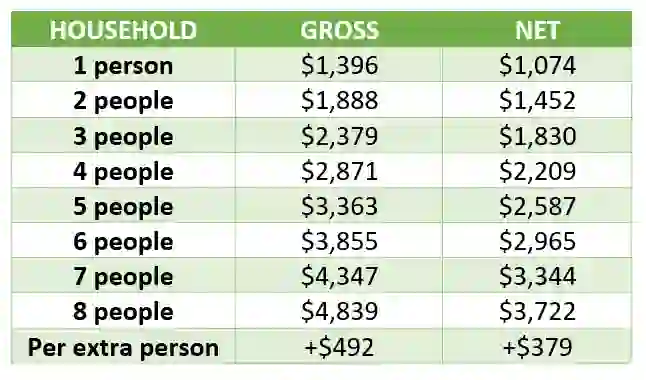Food Stamps: What Is the Most Money You Can Make To Qualify?

Commitment to Our Readers
GOBankingRates' editorial team is committed to bringing you unbiased reviews and information. We use data-driven methodologies to evaluate financial products and services - our reviews and ratings are not influenced by advertisers. You can read more about our editorial guidelines and our products and services review methodology.

20 Years
Helping You Live Richer

Reviewed
by Experts

Trusted by
Millions of Readers
In 2019, 35.7 million people relied on the Supplemental Nutrition Assistance Program (SNAP) to eat, according to the Annie E. Casey Foundation, but enrollment had been steadily declining since 2013. That trend went out the window when the pandemic reversed the tide and swelled the rolls of America’s largest food-security program to 41.5 million in 2021.
In 2022, applications were up again, but this time around, inflation and rising prices were to blame.
If you or someone you know is experiencing food insecurity, it’s important to understand how the United States Department of Agriculture (USDA) — which runs SNAP — classifies income. It’s also important to know the limits the USDA places on the amount of money recipients can earn in order to qualify. Keep reading to find out how much income you can earn while still being eligible for the program previously known as food stamps.
Understanding ‘Income’ as It Pertains to SNAP
The USDA has standards for two income categories: gross income and net income. Most families have to meet the limit thresholds for both to qualify for benefits. Gross income is “a household’s total, non-excluded income, before any deductions have been made,” according to the USDA. Net income is “gross income minus allowable deductions.”
Deductions include things such as qualifying medical or dependent care expenses.
For the purposes of SNAP, it’s important to note that income includes not just wages and other earned income, but unearned income like Supplemental Security Income (SSI) and veterans, disability and death benefits.
Some households that receive SSI or Temporary Assistance for Needy Families (TANF) benefits might automatically qualify for SNAP because they’ve already been vetted for entry into a means-tested program.
Take Our Poll: Do You Think AI Will Replace Your Job?
Income Eligibility Limits By Household Size
Here’s a look at income limits for SNAP eligibility by household size in the 48 contiguous states through Sept. 30. Gross monthly income represents 130% of poverty and net monthly income represents 100% of poverty. The threshold scales up with the number of household members actively receiving benefits.

The Limits Are Higher in Alaska and Hawaii
In Hawaii, income limits range from $20,318 per year for one-person households to $69,732 for households with eight recipients. That’s about $1,69 to $5,811 per month. After that, it’s $7,059 per year for each additional person.
In Alaska, the annual income limit ranges from $22,087 ($1,841 per month) for one person to $75,777 ($6,315 per month) for eight people.
The Bar Is Lower for Especially Vulnerable Households
Most households have to meet both the net income and gross income limits that the USDA outlines — but there are a few rare exceptions.
Most applicants can have up to $2,500 in what the USDA calls “countable resources” — assets like cash or money in the bank. If a household member is disabled or at least 60 years old, however, the limit increases to $3,750.
Also, households that include elderly people, disabled people or both must meet only the net income test, not the threshold for gross income.
More From GOBankingRates
 Written by
Written by  Edited by
Edited by 

























